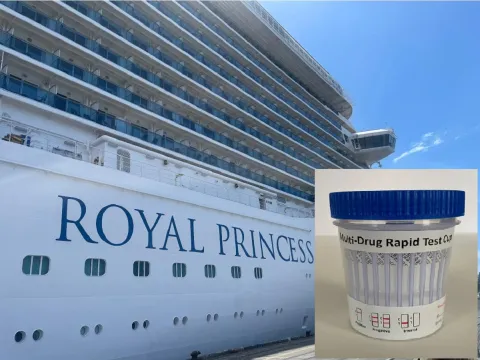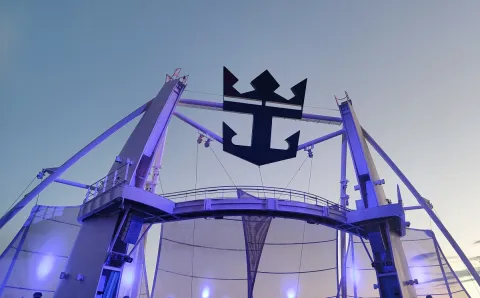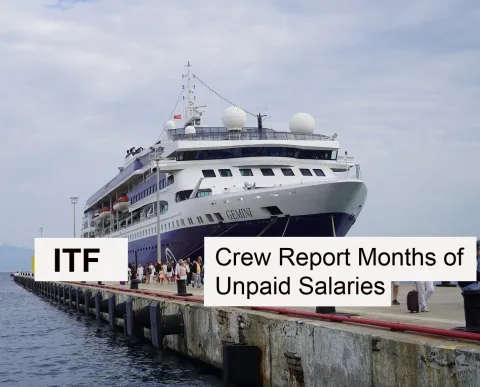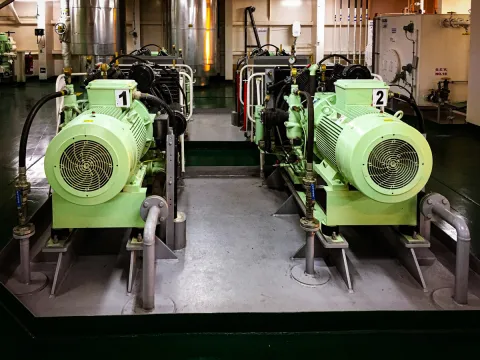
In the cruise industry, we must always track employee satisfaction levels. The most efficient way is to conduct a timely survey and analyze the results. The initial analysis will likely yield minimal results if the company has not worked on employee engagement. Engagement is not the constant value – after a vacation or a teambuilding event, people are normally full of enthusiasm and desire to work. At the same time, employees who are doing monotonous work without proper encouragement are close to burnout syndrome.
To prevent this syndrome, use the following techniques to measure a cruise ship company's employee satisfaction level.
Pulse Surveys. Short but frequent surveys are an excellent way to keep abreast of the crew members' moods and respond quickly to negative changes. The questionnaire should not be long and complicated – it is enough to include from 5 to 10 questions about the feelings of your colleagues.
One-on-Ones. Team leaders in the cruise industry have to be proactive and establish one-on-one meetings on a regular basis. Employees must be sure you value their work and consider their suggestions. One-on-one sessions help reveal individual employee goals and the ways you can shape them into the company goals.
Exit Interviews.HR managers on the ship can get valuable insights into the working atmosphere of a particular department or the company as a whole from the existing employees. Such people can be more candid and provide constructive feedback about the organization. Even though it's too late to improve relationships with a certain person, it's a good opportunity to find out the issues that have to be solved immediately to keep current employees loyal and happy.
1. Stop unknowingly creating tension
Leaders unknowingly create tension with their employees when they expect them to behave like they do rather than encourage them to be authentic. Opportunities are everywhere, but only some leaders have the eyes to see them. When employees are encouraged to be themselves and not what others want them to be, they will begin to embrace an entrepreneurial attitude that wasn't previously being leveraged – thus stimulating engagement.
Tension is created by leaders on the ship who don't take the time to engage with their employees. When an employee feels that their leader doesn't care – or is disingenuous about their career and future opportunities, they may begin to shut down and grow bitter. Employees respect leaders that allow them to use their most natural skills and characteristics. Employees are most engaged when they don't feel confined to an environment of limitations and constraints. Be more aware of what your employees need and stop unknowingly creating tension.
2. Detect the most positive capabilities in people
Stop spending time being overly critical of what your employees are not doing right and identify what they are naturally gravitating towards – that which gets them excited. Throw their job description out the door and focus on those areas your employees enjoy contributing to the most, and build a plan that utilizes their most positive capabilities to create the outcomes you desire. I know this might be too idealistic to be imposed in the hectic and demanding cruise industry, but it is possible, and yes, it will increase the employees' efficiency levels drastically.
Everyone wants to enjoy what they do at work, so allow employees to engage with the business in ways that generate the results that you require while giving them the flexibility to navigate and explore how they can best contribute. See well beyond the obvious. Expand your leadership lens to detect what matters most to your employees and allow them to flourish.
3. Empower to discover potential
You will never know what an employee can accomplish unless you stop micromanaging and empower them to discover their full potential. Put them in situations that will build their confidence and strengthen their self-trust.
Empowering employees sounds simple, but it requires a leader to let go, step back, and observe. It demands a confident leader that is willing to allow their employees to fail, then help them pick up the pieces and rebound. Employees engage when they are empowered to explore endless possibilities. Sadly, the cruise ship industry mainly demands managers but not leaders. Manager on the ship is expected to be good with numbers and not necessarily to be compassionate and empathetic leader. If you want to be an inspiring leader, take time to push your employees to become the best version of their capabilities. Show care for their personal development; crew members will follow and respect you.
4. Put them in a position of influence
Beyond empowering employees, put them in a position of influence to see how they react and engage in their new role. Stimulating engagement is a two-way street: it's not just how employees gravitate towards their leaders but how others gravitate towards them. Allow your employees to discover their own potential and put them to the test. Witness how they lead and collaborate with others. If you micromanage employees too much, they disengage. Employees want to feel trusted and valued for the independent decisions they can make and the impact they can create.
The most engaged employees are those whose leaders have confidence in them; who trust that they can always be depended on to deliver when called upon. Employees are most engaged when they feel a sense of responsibility towards their leaders and the example their performance sets for others. This is accelerated when they are placed in roles of influence and responsibility.
5. Share your success to build their momentum
Rather than enjoy your leadership success alone, please share it with your employees and allow them to experience it with you. The wise man forfeits his fortune when he does not trust himself. Sharing your success with your employees and making them feel an important part of your accomplishments is a sign of trust that organically creates engagement.
Employees want to support their leaders – even more so when a leader is transparent enough to share not only their success but also their vulnerabilities. Employees don't need leaders that always have to be right (or perceived as perfect) – they want leaders that open themselves up enough to share their journey with them. Genuine collaboration drives engagement and creates an environment of significance for everyone.
6. Be consistent and have their backs
Leadership in the cruise ship industry is about having each other's backs – especially those of your employees. Employees disengage when their leaders play mind games and are inconsistent with their approach and style. Employees are vulnerable these days – not really knowing who to trust, rely upon or follow, especially in the cruise ship industry, where everything happens very fast. The demands for financial goals and objectives are a priority, and the relationship with employees is not really valued enough. Invest time and build strong relationships with your employees.
Support your employees all the time if you want them to follow you.
Who wants to engage with a leader that doesn't have their back? This is why leaders lose top talent all the time. They assume their employees will be loyal to them – rather than recognizing that retaining top talent requires leaders to always look out for their best interests. Leaders must communicate and become more emotionally intelligent to stimulate employee engagement. Because, as I always say, respect is earned, never given. Choose to earn respect from your employees by listening to and empowering them, and they will support and follow you. Take care of your people. That's what inspiring leaders are born to do. Make a difference in the cruise industry, and stand out from the rest of the managers in a positive, inspiring way.
Crew Insights
Articles and experiences shared by crew members working on cruise ship. Find out more about ship life at sea together with tips and advices for first time crew members and cruise oldtimers.












